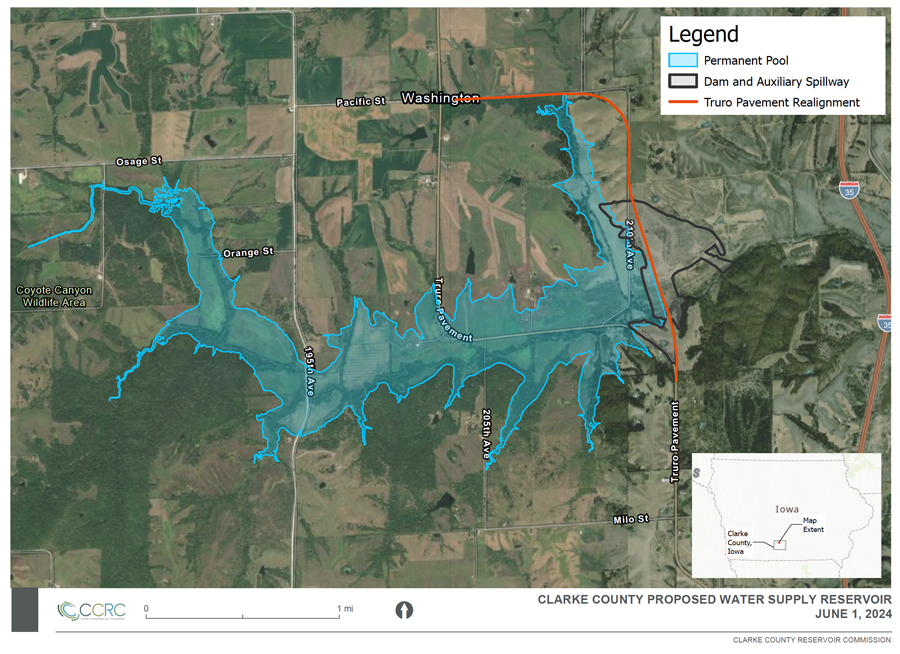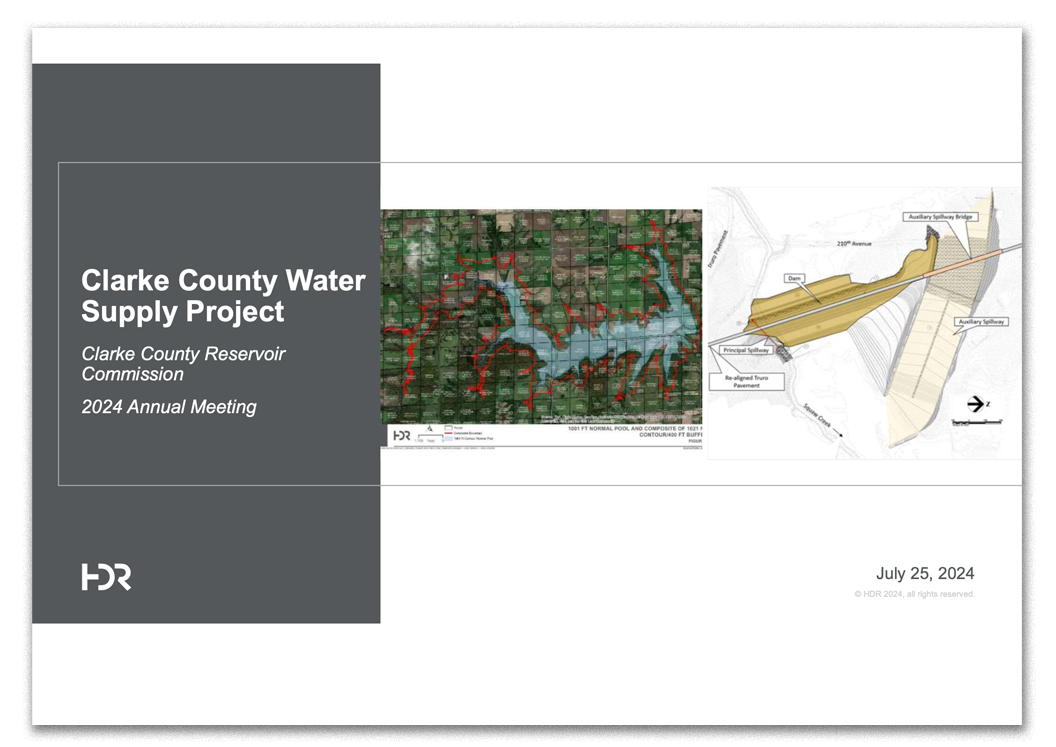THE RESERVOIR’S HISTORY
Decades of commitment to the future of Clarke County and surrounding communities
Since the early 1990’s leaders and dedicated community members throughout Clarke County have worked toward the research and development of an ample and sustainable water resource that will support the future of Clarke County, Iowa and our surrounding neighbors.
Below are a few of the milestones along our journey to water security.
Reservoir Conception
In the early 1990’s, considering water crises across the state of Iowa, a group of concerned Clarke County, Iowa citizens, along with local leadership, began discussing the sustainability of the county’s primary water source, Osceola’s West Lake. Discussions focused on actions needed to mitigate water shortages and potential future crises as well as provide ample water resources for future growth and development across the area. The ultimate decision to work towards the development of a new reservoir was made and actions taken to establish an official commission to research and develop a suitable water supply for Clarke County and surrounding communities.
In 2003 an official 28E Agreement was filed with Iowa’s Secretary of State to establish the Clarke County Reservoir Commission as a not-for-profit entity. The 28E defines the organization of powers, establishes reservoir management protocol, administration, and disposition of the property associated to the project.
The 28E also established the CCRC’s intent for the development of the Clarke County Reservoir. On the 28E, the Commission’s stated intent is “…to provide a source or sources of water which may be used for potable drinking water purposes…”
Future Water Resource Needs Analysis
According to an updated water needs analysis done in 2008 by the CCRC, the projected growth of Clarke County and south-central Iowa identified an existing water shortage that the new reservoir would be designed to solve. In that analysis, the capacity rating for Osceola’s West Lake was set to 800,000 to 900,000 Gallons Per Day (GPD). At the time of the study, West Lake was already providing more than 1,200,000 GPD – 30% more than the lake is rated for – and has increased over the years.
For future sustainability and to help facilitate future growth across the region, the CCRC has targeted a sustainable water supply of 2,000,000 GPD. Current design and engineering for the Clarke County Reservoir put the eventual resource available at 1,200,000 GPD. That, with West Lake’s 800,000 to 900,000 GPD, means the community would have access to the ~2 Million GPD targeted by the commission.
NRCS and Planning
While many partnerships and programs have been involved with the journey to the Clarke County Reservoir, the path to funding development and eventual completion is currently being taken through an cooperative approach with the USDA Natural Resources Conservation Service (NRCS).
Early in 2019, Congress appropriated significant funding again to the NRCS watershed program. During 2019, the CCRC initiated discussions with NRCS in Iowa about funding the project using the plan the Commission updated in 2013 from the 2011 NRCS plan. The agency determined that the May 2011 plan was “too old” so a new plan would need to be developed. The Commission applied for a planning grant from NRCS to cover about 78% of the costs of a new plan. This application was approved and an agreement signed in April 2021. The CCRC then signed a contract with HDR, their engineering firm, to complete the plan update according to NRCS requirements.
Currently, the CCRC and NRCS are working through State and Federal reviews for the plan and environmental impact statement. Final engineering design is expected to start in 2025.



